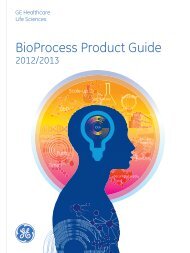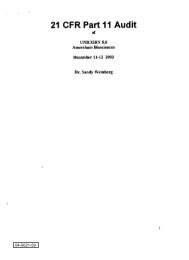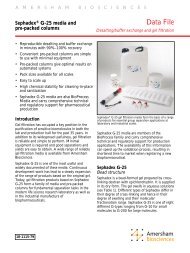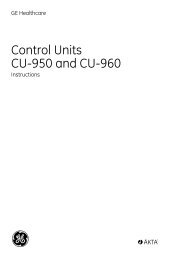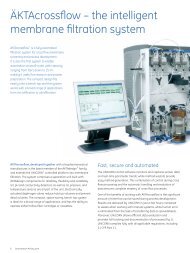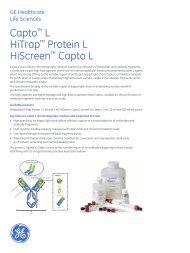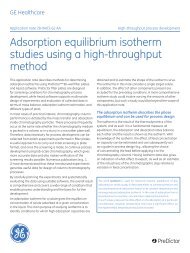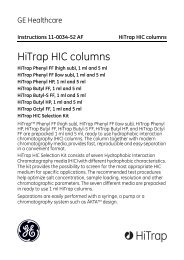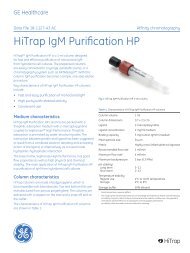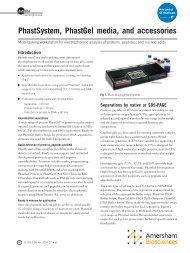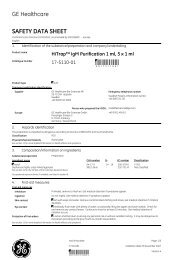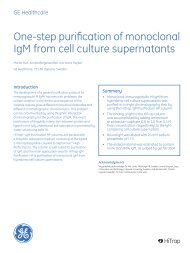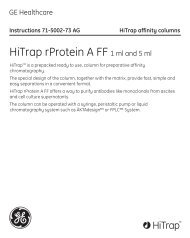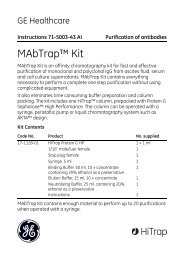HisTrap HP, 1 ml and 5 ml - GE Healthcare Life Sciences
HisTrap HP, 1 ml and 5 ml - GE Healthcare Life Sciences
HisTrap HP, 1 ml and 5 ml - GE Healthcare Life Sciences
You also want an ePaper? Increase the reach of your titles
YUMPU automatically turns print PDFs into web optimized ePapers that Google loves.
Recommended conditions<br />
Binding buffer: 20 mM sodium phosphate, 0.5 M NaCl,<br />
20–40 mM imidazole, pH 7.4 (The optimal<br />
imidazole concentration is proteindependent;<br />
20–40 mM is suitable for many<br />
proteins.)<br />
Elution buffer: 20 mM sodium phosphate, 0.5 M NaCl,<br />
500 mM imidazole, pH 7.4 (The imidazole<br />
concentration required for elution is<br />
protein-dependent).<br />
Sample preparation<br />
For optimal growth, induction, <strong>and</strong> cell lysis conditions for your<br />
recombinant histidine-tagged clones, please refer to established<br />
protocols.<br />
Adjust the sample to the composition <strong>and</strong> pH of the binding buffer<br />
by: Adding buffer, NaCl, imidazole, <strong>and</strong> additives from<br />
concentrated stock solutions; by diluting the sample with binding<br />
buffer; or by buffer exchange, (see Table 3). Do not use strong<br />
bases or acids for pH-adjustment (precipitation risk). Filter the<br />
sample through a 0.22 µm or a 0.45 µm filter <strong>and</strong>/or centrifuge it<br />
immediately before applying it to the column.<br />
To prevent the binding of host cell proteins with exposed histidine,<br />
it is essential to include imidazole at a low concentration in the<br />
sample <strong>and</strong> binding buffer (see Optimization).<br />
8 71-5027-68 AH



